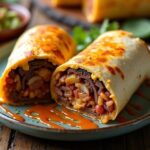Tonsillectomy Diet Day By Day for Child Recovery

The food that a child consumes is among the most significant factors of recovery when the child has undergone a surgical procedure, called tonsillectomy, which is aimed at removing the tonsils. Wrong food may irritate the throat, slow down the recovery, and make the situation worse. That’s why it’s essential to understand the tonsillectomy diet day by day for child so you can ensure a smooth and fast recovery for your little one.
Table of Contents
- Day 1 after the tonsil surgery: What should a child eat?
- Days one: Recommended foods:
- What Should be the Diet in Days 2 to 5?
- Recommended Diet Plan (Day 2 to day 5):
- At what Age Does a Child Get to Eat Normal Food?
- Safe vs Unsafe Foods(Comparison Chart) Day 6-10
- What can you do to keep your child well hydrated and comfortable?
- What happens In case the child refuses to eat or drink?
- Conclusion
- FAQs
- 1. What foods help reduce pain after a tonsillectomy in children?
- 2.When can solid foods be introduced in the tonsillectomy diet day by day for child?
- 3. Is milk allowed in the tonsillectomy diet day by day for child?
- 4. What should I do if my child refuses to eat during the tonsillectomy diet day by day for child?
- 5. How long does it take for a child to fully recover after tonsil surgery?
Here on the blog we are going to get into detail what your child has to consume on Day 1 through end of the recovering period. We will examine the type of food, consistency and even propose simple meal plans that would help to lessen the pain and accelerate recovery. Be it as a concerned parent or a caregiver, this guide will assist you to plan a safe, healthy, and healing a child that has undergone a tonsil surgery within an acceptable and nutritious diet.
Key Points:
- The first days require soft, cold, and hydrating food.
- During the recovery, you should avoid spicy, crunchy and acidic food.
- Reintroduce solid food slowly beginning on the Day 6 and onward.
Day 1 after the tonsil surgery: What should a child eat?
The initial 24 hours after a tonsillectomy is the most delicate one. The anesthesia will cause your child pain, nausea, or loss of appetite as well as throat soreness. Stick to drink a lot of fluid and non-reactive items to make this period as pleasant as you can.
Days one: Recommended foods:
| Type | Examples |
|---|---|
| Liquids | Cold water, apple juice, clear broths |
| Frozen Treats | Ice pops, ice cream (no nuts), sherbet |
| Others | Gelatin, electrolyte drinks |
The children can reject food because they feel uncomfortable, however, taking sips of cold drinks every hour will ease the swelling and pain. Liquids should not be acidic, thus do not take orange juice or tomato juice and non carbonates (sodas).
Avoid:
- Hot things (soup, tea and coffee)
- Nauseous-heavy products in case of the presence of nausea
- hard or semi-solid food which requires chewing
Reminder: Continually check on your child not to choke or to experience swallowing problems within the first 24 hours.
Now this is a day of rest and refreshment. It does not matter whether they eat very little, liquids are important.
What Should be the Diet in Days 2 to 5?
It is very important days to heal. On Day 3 or 4, there is an increase in pain because of the formation of scab. The food given to your child should also aim at smooth foods that slide down the gullet easily.
Recommended Diet Plan (Day 2 to day 5):
| Meal Time | Food Options |
|---|---|
| Breakfast | Mashed banana, yogurt (plain), soft scrambled eggs |
| Lunch | Cream of chicken soup (lukewarm), mashed potatoes |
| Snack | Applesauce, smoothies (no seeds or ice chunks) |
| Dinner | Pasta with butter, cottage cheese, soft rice |
Now it is time to start adding in pureed or soft forms foods rich in nutrients. Protein assists in tissue healing and thus eggs, yogurt or tofu may be introduced in the diet.
Foods still not to be eaten:
- Hot or astringent food Spicy or Acidic
- Potato chips, toast bread, crackers
- Awesome citrus fruits such as oranges or pineapples
Note: although your child may be feeling better, do not introduce solid foods too soon since it will mess up the healing scabs.
Replenishing should be done with water, electrolytic solutions and popsicles. Minimum of 6-8 glasses of fluid should be aimed daily according to age and size of the child.
At what Age Does a Child Get to Eat Normal Food?
On Day 6 to Day 10, your child will experience a great improvement. The pain could diminish and they could start requesting things that they like to eat. This is the optimum point to re-introduce soft solids but not the thing that is rough or spicy as well as hard foods.
Safe vs Unsafe Foods(Comparison Chart) Day 6-10
| Safe to Eat | Unsafe to Eat |
|---|---|
| Pancakes with syrup | Toast or crusty bread |
| Soft pasta with sauce | Pizza |
| Scrambled eggs | Fried chicken |
| Steamed veggies | Raw carrots |
| Rice pudding | Cookies or chips |
By this age, the majority of children are capable of soft, yet solid food where moist pasta, soft bread (that does not have crusts), cooked vegetables are not an exception. Make the portions small and keep on giving water and soft drinks to facilitate swallowing.
Sample Diet Plan to follow:
- Breakfast: pancakes, soft and with syrup, apple juice
- Meal at lunch: Macaroni with cheese, steamed carrots
- Snack: Banana, fruit parfait flavor yogurt
- Dinner: Soft rice and boiled chicken (well mashed)
Tip: Do not pressurize here talking about food when your child is not accepting it. Promote eating small quantities of food and watch out for pain signals.
What can you do to keep your child well hydrated and comfortable?
Most important aspect of recovery is in hydration. Your child is in danger of dehydration, constipation, or elevated throat pain when he or she deprives the body of sufficient fluids. Moreover, dry throat may become infected or bleed.
Best Hygdrating Beverages:
- Ice water
- Drinks with lots of electrolytes (such as Pedialyte)
- Coconut water
- Weak herbal teas (warm)
Drinks:
- Citrus juices
- Carbonated sodas
- Chocolate milk (is possible to be very thick)
Hydration is not that bad or dry; make it fun. Serve with amusing straws, iced bottles or provide popsicles of their preferred tastes. When your child does not seem keen, give only small sips after every 10-15 minutes but not full glasses.
Medications that treat pain such as acetaminophen or even ibuprofen (if approved by the doctor) can simplify the process of swallowing. Administer them prior to meals to diminish pains.
Your child should also be seated comfortably in an upright posture when drinking or eating to prevent the possibilities of gagging and choke.
What happens In case the child refuses to eat or drink?
It is normal when children refuse to eat or drink something after the operation because of a sore throat. Dehydration The longer you go without drinking fluids, however, the more risky it is. How then do you cope with this?
Advice to Stimulate Eating and Drinking:
- Give options: Give your child a list of things he or she can do that are safe.
- Portion sizes: Offer bite-sized tidbits or servings as opposed to meals.
- Establish routines: Serve current meals at the same rate every day to create habits.
- Distraction is good: allow them to watch cartoons or read a story at meals.
Symptoms of Dehydration to Look Out:
- Dry mouth
- Decreasing the frequency of urination
- Bouts of drowsiness or lethargy
- Tearsless crying
In case you observe these symptoms it is imperative that you call your pediatrician. One of the leading causes of the readmission of the patients who have undergone a tonsillectomy is dehydration. a tonsillectomy.
Conclusion
Understanding the tonsillectomy diet day by day for child is essential for ensuring a smooth and pain-free recovery. Starting with clear fluids, progressing to soft foods, and eventually reintroducing solids helps reduce complications and promotes healing. Every child is different, so adapt the guidelines to suit your child’s needs, preferences, and comfort level.
Always consult your child’s doctor if you notice anything unusual or if healing doesn’t go as expected. Diet plays a huge role, but parental care, attention, and patience are just as important.
FAQs
1. What foods help reduce pain after a tonsillectomy in children?
Cold and smooth foods like ice cream, popsicles, and smoothies help soothe the throat and reduce pain.
2.When can solid foods be introduced in the tonsillectomy diet day by day for child?
Most children can start eating soft solids around Day 6, but crunchy or spicy foods should be avoided until full recovery (about 2 weeks).
3. Is milk allowed in the tonsillectomy diet day by day for child?
Yes, but avoid if they feel nauseous. Opt for low-fat options and avoid chocolate milk in the early days.
4. What should I do if my child refuses to eat during the tonsillectomy diet day by day for child?
It’s common, but make sure they drink fluids to prevent dehydration. Call a doctor if your child refuses food or drink for over 12 hours.
5. How long does it take for a child to fully recover after tonsil surgery?
Full recovery typically takes about 10–14 days. Most kids return to regular meals and activity within two weeks.
Latest Posts

Chipotle Nutrition – Your go-to guide for calories, healthy choices, and balanced meals at Chipotle.
TOP NEWS
© Copyright 2025 Chipotle Nutrition. All rights reserved












No Comments